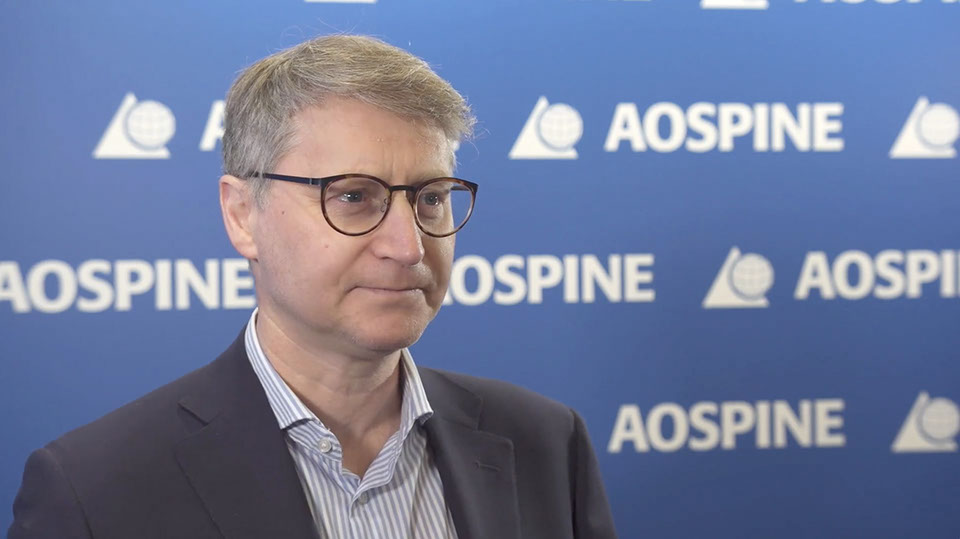feature storY
HIGHLIGHTS

AOSpine study will help interpret neuro-monitoring alerts—first patient recruited
AOSpine Knowledge Forum (KF) Deformity has launched a study to better understand and interpret neuro-monitoring alerts during complex high-risk corrective spinal deformity surgery. The AOSpine Spinal Deformity Intraoperative Neuro-Monitoring (SDIM*) study is an international collaboration with neurophysiologists, anesthetists, and surgeons. The aim is to help surgical teams understand the meaning of intra-operative changes in neuromonitoring signals and to help to guide actions to perform in response. This will greatly improve outcomes in complex spinal deformity surgery.
In spine surgery, neuro-monitoring is the mainstay for providing real-time information on the status of the spinal cord and how it is reacting to surgical maneuvers. Despite its widespread use, interpreting the results is often lacking or controversary.
“Knowing when an alert is serious or less serious, or when it’s time to do certain maneuvers to reverse the alerts is controversial. People are not sure what to do in different situations,” Principal Investigator and AOSpine KF Deformity Chairperson Stephen Lewis explains. “Sometimes we see the spinal cord threatened by the procedure, and small maneuvers—such as giving blood, raising the blood pressure, or releasing some of the correction—may be enough to prevent damage to the spinal cord.”
“Sometimes small maneuvers may be enough to prevent damage to the spinal cord.”
Optimizing patient care and safety
The first patient has already been recruited into the AOSpine SDIM-study in mid-June by Nanjing, China. In total, 22 sites across five AOSpine regions were selected from an open call to AOSpine members. The call resulted in an impressive 393 responses.
Both adult and pediatric patient groups are included.
Based on real-time key data points, this international, prospective study will provide an opportunity to develop a clinical care tool. It will enable AOSpine to provide surgeons with the knowledge they need for optimal patient safety and care in the treatment of these complex cases.
Lewis hopes the study will allow to set up simple alert patterns for different types of injury to the spinal cord—an algorithm if you like. “By knowing the patterns and recognizing the event that took place, you can reverse the injury and restore the signal. With this, we hope to maximize deformity corrections in a safe manner so that the spinal cord is not compromised during these complex procedures”, Lewis concludes.
“SDIM will enable AOSpine to provide surgeons with the tools and the knowledge they need for optimal patient safety and care.”

 22 sites from 5 regions participate in SDIM.AOSpine Knowledge Forum Deformity at the GSC2019 in Toronto, ON, Canada in May 2019.2 - 2<>
22 sites from 5 regions participate in SDIM.AOSpine Knowledge Forum Deformity at the GSC2019 in Toronto, ON, Canada in May 2019.2 - 2<>
(*) Understanding and managing intraoperative neuromonitoring changes during spinal deformity surgery: a prospective observational study (SDIM)
- Study support is provided directly through AOSpine's Research department

- SDIM was awarded a Scoliosis Research Society (SRS) research grant from the SRS
- The AOSpine SDIM study is executed with support from AOCID
- A pilot study was published in Global Spine Journal

- For more details about the study, please visit clinicaltrials.gov

Newsletter 22 | August 2019
Newsletter 22
August 2019
feature story
HIGHLIGHTS